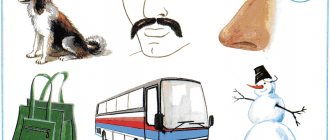Present nasal fricatives[edit]
| Nasal fricative | |
| ◌͋ |
In addition to oral nasal fricatives, there are true nasal fricatives, formerly called nasal fricatives
. Sometimes they are produced by people with speech impairments. Turbulence in the flow of air is a crevice characteristic produced not in the mouth, but in the nasal cavity. A superimposed homothetic sign, which resembles a colon separated by a tilde, is used for this in IPA expansions: [n͋] is a voiced alveolar nasal fricative, without mouth airflow, and [n͋] is the voiceless equivalent; [v͋]Fricative oral drug with simultaneous friction in the nose. No known language uses nasal fricatives in disordered speech.
4.Treatment
The above-mentioned difficulty in eliminating nasality lies, first of all, in the fact that in almost all cases (regardless of the patient’s age and the nature of the problem), a multidisciplinary approach is required. In parallel with surgical intervention (removal of mechanical obstacles or anatomical defects), a course of speech therapy correction and physiotherapeutic procedures (electrotherapy, massage stimulation, mechanical obturators, etc.) is carried out. It is a comprehensive therapeutic strategy, combined with the willingness of the patient (or his parents, if we are talking about a child) to comply with all instructions and prescriptions, that provides a favorable prognosis.
Nasalized consonants[edit]
There are also nasal versions of other consonant sounds, but these are much less common than occluded nasals or nasal vowels. Some South Arabian languages use phonemic nasalized fricatives such as /z̃/, which sounds like [n] and [z] simultaneously. The Middle Chinese consonant 日 ([ȵʑ]; [ʐ] in Modern Standard Chinese) has an odd history; for example, it became [ʐ] and [ɑɻ] (or [ɻ] and [ɚ], respectively, depending on accents) in Standard Chinese; [z]/[ʑ] and [n] in Hokkien; [z]/[ʑ] and [n]/[n̠ʲ] are borrowed from Japan. It seems likely that it was once a nasal fricative, perhaps a palatal [̃].
In Coatsospan Mixtec, fricatives and affricates are nasalized before nasal vowels, even if they are voiceless. In hupa, the velar nasal /n/ often has the tongue fail to make full contact, resulting in a nasalized approximant, [ɰ]. That is, cognate with the nasalized palatal approximation [ȷ] in other Athabaskan languages.
In Umbundu, the phonemic /ṽ/ contrasts with the (allophonic) nasalized approximant [w̃] and is therefore more likely to be a true fricative rather than an approximant. [ Further explanation of the need
] In Old and Middle Irish, the mutated ⟨m⟩ was a nasalized bilabial fricative. [5]
Sundanese has an allophonic nasal glottal stop [ʔ̃]; Nasal stops may occur only at or below the pharyngeal junction, or they would be simple nasal passages. [6] Nasal flaps are allophonic in distribution. Many West African languages have a nasal flapper [ɾ̃] (or [n̆]) as an allophone of /ɾ/ before a nasal vowel; However, Pashto has a phonemic retroflex lateral nasal flap.
Other languages, such as the Khoisan languages of Khoekhoe and G|ui, as well as several Kunga languages, include nasal click consonants. Nasal clicks typically have a nasal or supralatal nasal preceding a consonant (e.g. velar-palatal ⟨ŋ͡ǂ⟩ or ⟨ᵑǂ⟩ and uvular-palatal ⟨ɴ͡ǂ⟩ or ⟨ᶰǂ⟩). [7] Nasal laterals such as [l̃] are easy to produce, but as phonemes they are rare or absent; occur allophonically
in some Portuguese words such as
enlatar
or
enlamear
. Often, when /l/ is introduced into the nose, it becomes [n].
Contextual nasalization[edit]
Vowels assimilate to surrounding nasal consonants in many languages such as Thai, creating allophones of nasal vowels. Some languages exhibit nasalization of segments adjacent to phonemic or allophonic nasal vowels, such as Apurinã.
Contextual nasalization can result in the addition of nasal vowels to phonemes in the language. [8] This happened in French, most of whose final consonants disappeared, but its final nasals made the preceding vowels nasal, introducing a new distinction into the language. Example: vin blanc.
[vɛ̃ blɑ̃] ("white wine"), ultimately from Latin
vinum
and
blancum
.
2. Reasons
A child learns to pronounce individual phonemes, words and entire phrases clearly and correctly over several years. From the point of view of biological evolution and adaptation, this is an impermissible, but at the same time, a forced, necessary waste of time, since speech became one of the most important factors that first ensured the survival of the species Homo Sapiens, and then its dominant position on the planet. The most complex act of phonation and articulation involves the vocal cords, larynx, oral and nasal cavity, teeth, tongue, many muscles, cranial resonators - sinuses (four pairs of paranasal sinuses). An anomaly or pathology in any of these elements can lead to dysphonia, dysarthria, dyslalia and other speech disorders, including nasality.
Rhinolalia can be either congenital or acquired. There are also several degrees of severity.
The most common causes of twang:
- intrauterine anomalies in the development of the nasal passages, soft and hard palate;
- curvature of the nasal septum;
- traumatic deformations and displacements of osteochondral structures;
- hypertrophic, hyperplastic, neoplastic growths (polyps, adenoids, tumors and other mechanical blocks in the airways);
- defects due to surgical interventions;
- swelling in acute or chronic inflammation of the nasopharynx;
- adhesions and other fibrosing processes;
- tissue breakdown due to specific aggressive destructive infections (tuberculosis, syphilis);
- dysfunction or failure (paralysis, paresis, etc.) of the soft palate and/or muscles involved in articulation - this factor is especially significant in the case of acute cerebrovascular accidents.
Visit our Otolaryngology (ENT) page
Degree of nasality[edit]
Languages are occasionally found, such as in Palantla Chinantec, where vowels appear to exhibit three contrasting degrees of nasality: oral, e.g. [e] vs. slightly nasalized [ẽ] vs. highly nasalized [e͌], [2] [3] although Ladefoged and Maddieson believe that slightly nasal vowels are best described as oral-nasal diphthongs. [4] Note that Ladefoged and Maddison's transcription of the heavy nasalization with the double tilde may be confused with extIPA's adoption of this diacritic for pharynx.







